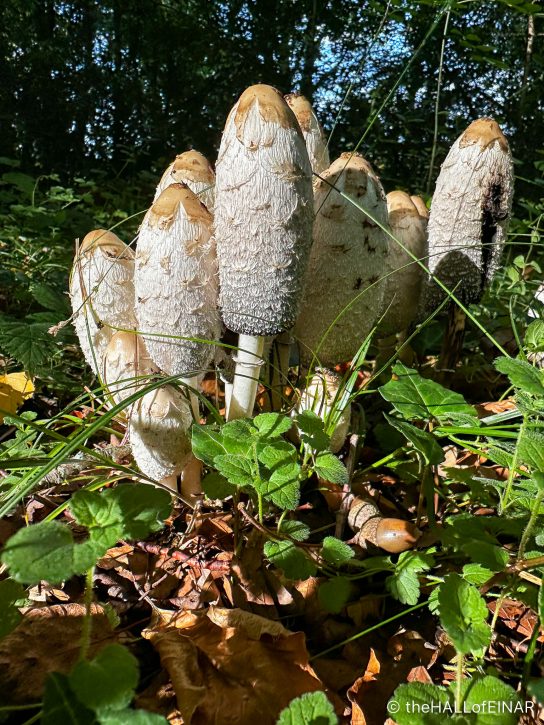A Shaggy Inkcap story
I’ve been enjoying looking through this 1947 copy of Edible and Poisonous Fungi from 1947.
It has one of my favourite edible mushrooms in there, the Shaggy Inkcap or Lawyer’s Wig, Coprinus comatus.
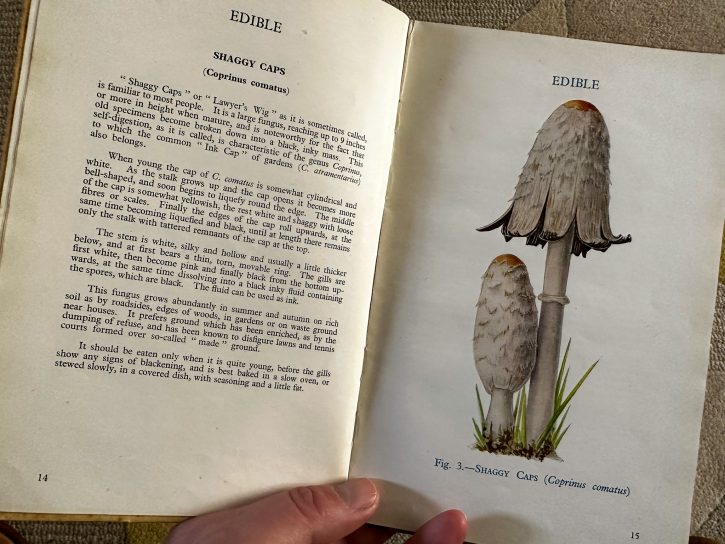
Here’s what the book says about it:
“Shaggy Caps” or “Lawyer’s Wig” as it is sometimes called, is familiar to most people. It is a large fungus, reaching up to 9 inches or more in height when mature, and is noteworthy for the fact that old specimens become broken down into a black, inky mass.
They certainly can get very large:
They also ‘self-digest’, although I’ve always referred to it as deliquescing.
This self-digestion, as it is called, is characteristic of the genus Coprinus, to which the common “Ink Cap” of gardens (C. atramentarius) also belongs.
I found some on 14 November 1976 and wrote about them in my childhood nature notebooks.
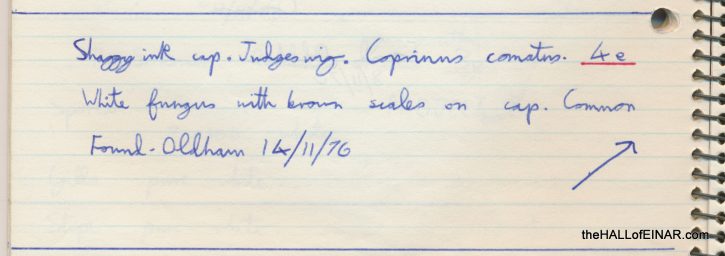
When young the cap of C. comatus is somewhat cylindrical and white. As the stalk grows up and the cap opens it becomes more bell-shaped, and soon begins to liquefy round the edge. The middle of the cap is somewhat yellowish, the rest white and shaggy with loose fibres or scales.
Bell-shaped and liquefying. Yes.
Finally the edges of the cap roll upwards, at the same time becoming liquefied and black, until at length there remains only the stalk with tattered remnants of the cap at the top.
Here’s what that looks like:
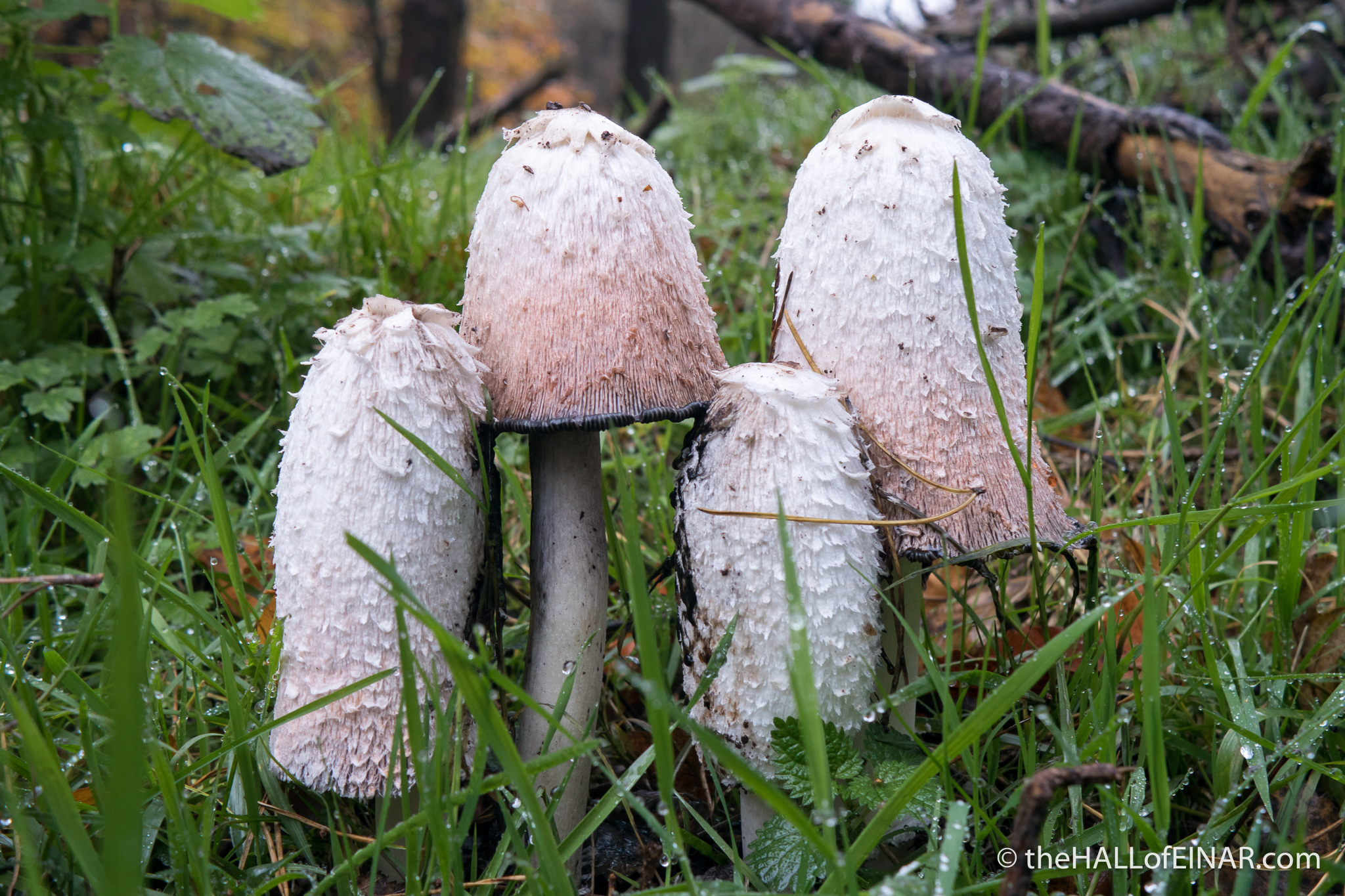

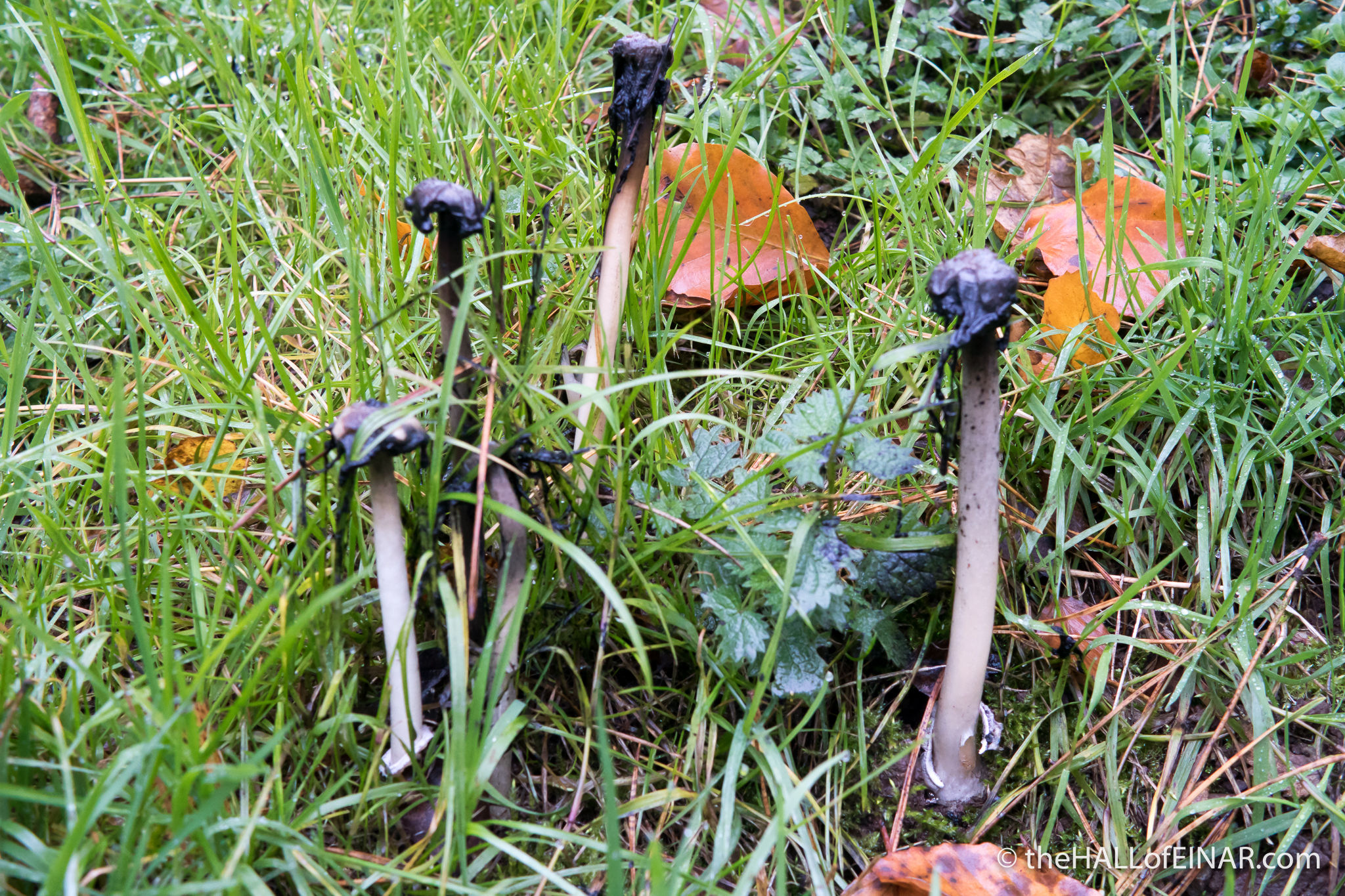
The stem is white, silky and hollow and usually a little thicker below, and at first bears a thin, torn, movable ring.
You can glimpse the ring here:
The gills are first white, then become pink and finally black from the bottom up-wards, at the same time dissolving into a black inky fluid containing the spores, which are black. The fluid can be used as ink.
Ink? That’s true. There was a 1970s obsession with using ink cap ink for important documents to prove their authenticity. Now, South Devon artist Jo Brown uses Inkcap ink to sign her ink cap artwork:
Cool, isn’t it? Do visit her shop here.
This fungus grows abundantly in summer and autumn on rich soil as by roadsides, edges of woods, in gardens or on waste ground near houses. It prefers ground which has been enriched, as by the dumping of refuse, and has been known to disfigure lawns and tennis courts formed over so-called “made” ground.
Personally, I think lawns and tennis courts would be improved by Inkcaps, rather than disfigured.
It should be eaten only when it is quite young, before the gills show any signs of blackening, and is best baked in a slow oven, or stewed slowly, in a covered dish, with seasoning and a little fat.
They’re tasty. I’ve even cooked them with baked eggs and served them in ramekins to my parents. They loved them.
Here is Coprinus comatus from James Sowerby’s Coloured figures of English fungi or mushrooms from 1797. I can taste them just looking at his illustration.
Delicious.

